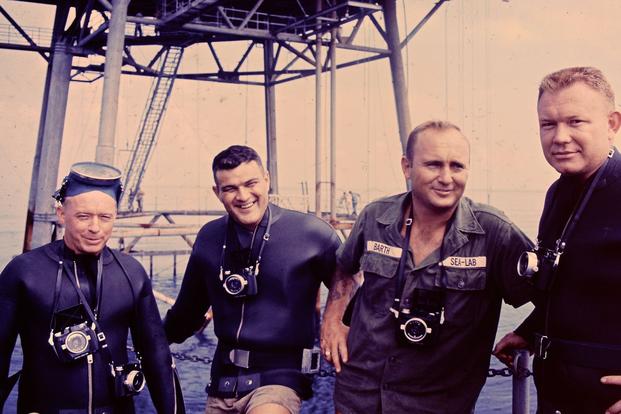"Sealab" is a new American Experience documentary that celebrates the aquanauts, the Navy's forgotten explorers of the 1960s.
Undersea exploration is just as dangerous as outer space travel, and the program details how those risk takers performed research that has helped the military mission in countless ways over the last 50 years.
The program will debut on most PBS stations on Tuesday, Feb. 12, at 9 p.m. ET (as always with PBS, check local listings).
We've got an exclusive clip that details how the sinking of the USS Thresher atomic submarine in 1963 motivated the Navy to (just barely) fund Capt. George Bond's research on the Sealab project.
The Navy recruited NASA astronaut Scott Carpenter as one of its first aquanauts in an attempt to draw the obvious parallel and gain the attention of an American public mesmerized by space travel.
Underwater pressure is one of the most dangerous threats to human life we've encountered, and the program details Bond's efforts to devise ways to counter the damage and allow humans to live undersea for extended periods of time.
The effort abruptly ended after a tragedy during the Sealab III mission in 1969. The Navy wasn't willing or able to overlook the fallout in the same way NASA pushed forward after the Apollo 1 fire.
Based on the book "SEALAB: America's Forgotten Quest to Live and Work on the Ocean Floor" by Ben Hellwarth, "Sealab" effectively revisits one of the greatest examples of scientific research conducted by the U.S. military. Check out the first chapter of the episode below.





